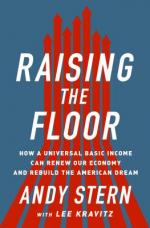- Books
- E-audiobooks
- E-books
- May We Suggest
- England
- United States history
- British royalty
- painting
- artist
- art forgery
- 17th century
- 20th century
- 21st century
- cycling
- bicycle riding
- economics
- middle class
- public welfare
- Latin America
- Foreign relations
- revolutions
- Business
- Chick Lit
- Government/Law
- Historical Fiction
- History
- Romance
September 3, 2016 | madame librarian
"This is what we long for: the profound pleasure of being swept into vivid new worlds, worlds peopled by characters so intriguing and real that we can't shake them, even long after the reading's done. In his earlier, award-winning novels, Dominic Smith demonstrated a gift for coaxing the past to life. Now, in The Last Painting of Sara de Vos, he deftly bridges the historical and the contemporary, tracking a collision course between a rare landscape by a female Dutch painter of the golden age, an inheritor of the work in 1950s Manhattan, and a celebrated art historian who painted a forgery of it in her youth. In 1631, Sara de Vos is admitted as a master painter to the Guild of St. Luke's in Holland, the first woman to be so recognized. Three hundred years later, only one work attributed to de Vos is known to remain--a haunting winter scene, At the Edge of a Wood, which hangs over the bed of a wealthy descendant of the original owner. An Australian grad student, Ellie Shipley, struggling to stay afloat in New York, agrees to paint a forgery of the landscape, a decision that will haunt her. Because now, half a century later, she's curating an exhibit of female Dutch painters, and both versions threaten to arrive. As the three threads intersect, The Last Painting of Sara de Vos mesmerizes while it grapples with the demands of the artistic life, showing how the deceits of the past can forge the present"--.
Advances in technology are creating the next economy and enabling us to make things/do things/connect with others in smarter, cheaper, faster, more effective ways. But the price of this progress has been a decoupling of the engine of prosperity from jobs that have been the means by which people have ascended to (and stayed in) the middle class. Andy Stern, the former president of the Service Employees International Union (SEIU) spent four years traveling the country and asking economists, futurists, labor leaders, CEOs, investment bankers, entrepreneurs, and political leaders to help picture the U.S. economy 25 to 30 years from now. He vividly reports on people who are analyzing and creating this new economy--such as investment banker Steve Berkenfeld; David Cote, the CEO of Honeywell International; Andy Grove of Intel; Carl Camden, the CEO of Kelly Services; and Geoffrey Canada of the Harlem Children's Zone. Through these stories, we come to a stark and deeper understanding of the toll technological progress will continue to take on jobs and income and its inevitable effect on tens of millions of people. But there is hope for our economy and future. The foundation of economic prosperity for all Americans, Stern believes, is a universal basic income. The idea of a universal basic income for all Americans is controversial but American attitudes are shifting. Stern has been a game changer throughout his career, and his next goal is to create a movement that will force the political establishment to take action against something that many on both the right and the left believe is inevitable. Stern's plan is bold, idealistic, and challenging--and its time has come.
n the early nineteenth century, the United States turned its idealistic gaze southward, imagining a legacy of revolution and republicanism it hoped would dominate the American hemisphere. From pulsing port cities to Midwestern farms and southern plantations, an adolescent nation hailed Latin America's independence movements as glorious tropical reprises of 1776. Even as Latin Americans were gradually ending slavery, U.S. observers remained energized by the belief that their founding ideals were triumphing over European tyranny among their "sister republics." But as slavery became a violently divisive issue at home, goodwill toward antislavery revolutionaries waned. By the nation's fiftieth anniversary, republican efforts abroad had become a scaffold upon which many in the United States erected an ideology of white U.S. exceptionalism that would haunt the geopolitical landscape for generations. Marshaling groundbreaking research in four languages, Caitlin Fitz defines this hugely significant, previously unacknowledged turning point in U.S. history.
With cities across the country adding miles of bike lanes and building bike-share stations, bicycling is enjoying a new surge of popularity in America. It seems that every generation or two, Americans rediscover the freedom of movement, convenience, and relative affordability of the bicycle. The earliest two-wheeler, the draisine, arrived in Philadelphia in 1819 and astonished onlookers with the possibility of propelling themselves "like lightning." Two centuries later, the bicycle is still the fastest way to cover ground on gridlocked city streets. Filled with lively stories, The Mechanical Horse reveals how the bicycle transformed American life. As bicycling caught on in the nineteenth century, many of the country's rough, rutted roads were paved for the first time, laying a foundation for the interstate highway system. Cyclists were among the first to see the possibilities of self-directed, long-distance travel, and some of them (including a fellow named Henry Ford) went on to develop the automobile. Women shed their cumbersome Victorian dresses--as well as their restricted gender roles--so they could ride. And doctors recognized that aerobic exercise actually benefits the body, which helped to modernize medicine. Margaret Guroff demonstrates that the bicycle's story is really the story of a more mobile America--one in which physical mobility has opened wider horizons of thought and new opportunities for people in all avenues of life.
"In their first adult novel, authors Heather Cocks and Jessica Morgan take on a story of romance and rivalries inspired by today's most talked-about royal couple: Will and Kate. "If I'm Cinderella today, I dread who they'll think I am tomorrow. I guess it depends on what I do next." American Rebecca Porter was never one for fairy-tales. Her twin sister Lacey was always the romantic, the one who daydreamed of being a princess. But it's adventure-seeking Bex who goes to Oxford and meets dreamy Nick across the hall - and thus Bex who accidentally finds herself in love with the eventual heir to the British throne. Nick is everything she could have imagined, but Prince Nicholas has unimaginable baggage: grasping friends, a thorny family, hysterical tabloids tracking his every move, and a public that expected its future king to marry a native. On the eve of the most talked-about wedding of the century, Bex reflects on what she's sacrificed for love -- and exactly whose heart she may yet have to break."





